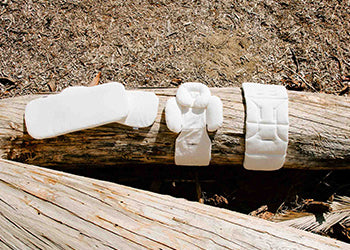Breastfeeding + breastfeeding expectations
Written by the midwives at the Tourmaline Birth & Wellness Collective
Coming down from your birth high and settling into breastfeeding is a whirlwind for many. With your vagina leaking blood, your breasts leaking milk and your eyes tears it can be overwhelming. Here is a breakdown for the natural sequencing in the first two weeks. Day by day, moment by moment things are constantly changing. Be gentle with yourself and babe. Nourish yourself, Hydrate yourself, rest and Breathe. Allow everything else to fall away as you and baby come into your breastfeeding relationship. Sucking is a natural reflex, and although sucking at the breast is how babies are fed. Babies suck for many reasons, comfort, connection, scared, lonely, if they have restrictions from birth, cranial molding. Sucking helps them work all this out, it regulates their nervous system.
To lay an excellent foundation for breastfeeding, keep your baby skin to skin and nurse on demand. In the early weeks you will want to make sure your baby doesn’t sleep past three hours during the day. This generally will happen naturally if you are feeding on demand. But occasionally babies will need to be waked to feed.
Day 1
Master the latch
It is normal for your breasts to feel tender during your first feed, the tenderness should subside after the baby is latched. If you feel pain and don’t hear babe swallow, or hear clicking, break the latch and relatch. Babes stomachs are small, about the size of a marble and colostrum is high in fat and protein. Most baby’s will latch in the first hour after birth. After a period of wakefulness your baby will have a long sleep, about, 5-6 hours. During this time we recommend you all rest.
After this initial stretch, baby will wake to feed every 1-2 hours. Baby’s NEED to nurse frequently every few hours. This is normal, physiological newborn activity. Give yourself and your baby time to establish proper latch during this first day. Watch for non-verbal cues, waking, rooting, hand sucking, don’t wait for cries to latch your baby. It is much easier to latch a baby when they are calm. Think about how we get hangry, baby’s get hangry too!
How breastfeeding feels is important; you should feel a strong pulling sensation. Baby dirty and wet diapers is an EXCELLENT indicator of if baby is getting enough! After a successful feed, your baby should produce at least one wet (urine) and one bowel movement in her diaper within 24 hours. The first bowel movement will look dark green and tarry.
Depending on when you gave birth day 2 may be very sleepy with baby nursing every few hours. Rest. It is also possible that your baby may be alert and hungry and it may feel like they want to nurse all day. Put them to breast and let them nurse. It is normal for them to nurse every 2-3 hours, this will help them bring in your milk. Make sure that baby is well latched. It is normal for the initial latch, 20-30 seconds to be painful. If it is painful beyond that break the seal and relatch baby.
When a baby is showing hunger cues and is persistently crying, especially after nursing, they are most likely hungry. If this is your experience, call your midwife! You can put baby back to breast, or hand express or pump some milk and feed baby with a spoon or syringe. A baby who is having difficulty soothing or appears fitful can greatly benefit from a chiropractic adjustment or CST session. We highly recommend it for all babies and mamas post birth. If your nipples are painful, cracked, bruised or blistered, correct your baby’s latch and positioning to prevent additional damage. To speed healing, express some milk on to your nipples and allow them to air dry. Silverlettes can be super soothing to sore nipples.
Your baby’s bowel movements should start to change from meconium to a brownish-green color, indicating that the baby is digesting colostrum and reducing jaundice levels. Your baby should have at least two wet and two greenish-brown bowel movement diapers by the end of day two.
Breastfeeding is a learned experience and each session will be different. Being flexible will provide relief from feeling pressured to do everything perfectly. It’s also important to take care of your own needs as you recover by resting, showering, eating and drinking.
On day three, your breasts will begin to feel fuller and heavier and possibly start leaking as your milk comes in, though it could take six or more days after birth for your full milk production to start, especially if it’s your first baby. Delayed milk production typically has no bearing on your ability to have a full milk supply, but catching and managing it early and appropriately is important. If your full milk production is delayed, continue nursing every two to three hours, until your milk comes in.
Feed baby on demand, As a rule of thumb in the first few weeks we recommend you feed baby every 2-3 hours. Sleep when baby sleeps. Drink and eat when baby nurses. It takes more calories to breastfeed a baby then grow a baby in utero!
Nursing your baby is a special experience. Though there may be challenges along the way, breastfeeding often becomes much easier, more enjoyable and more rewarding over time.
Signs for concern
If your baby is not getting enough breastmilk, they will likely exhibit the following signs: nursing constantly and crying after most feedings; yellowing skin; not waking spontaneously or inability to stay awake for feeds; trouble latching or sustaining breastfeeding for at least 10 minutes at a time; fewer wet or dirty diapers than expected; or dry lips. If you notice any of these warning signs, contact your midwife.
If you have persistent nipple or breast pain or a fever, call your midwife, as it may require medical treatment. A consultation with a lactation consultant can help resolve latching pain or any other breastfeeding concerns.










 Estonia
Estonia Latvia
Latvia Lithuania
Lithuania